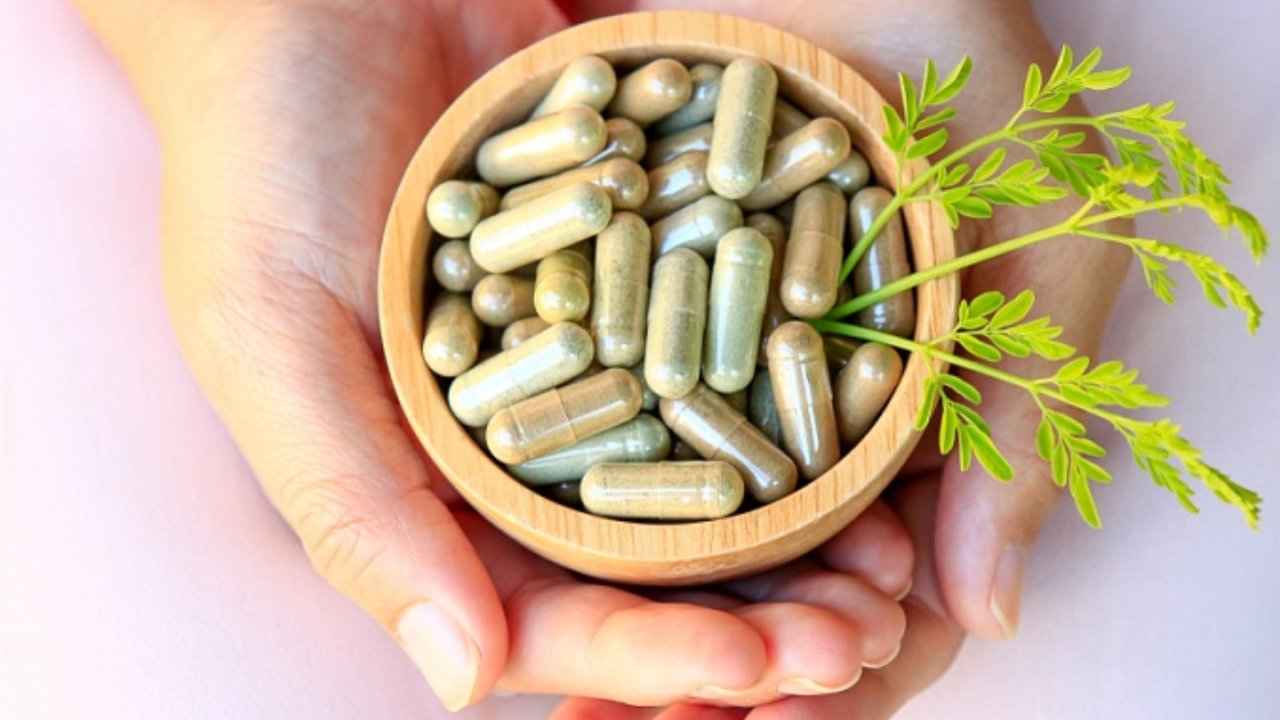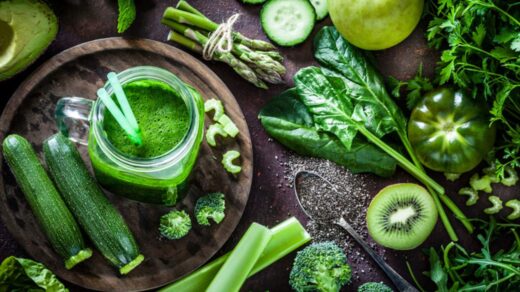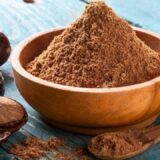Top 10 Ayurvedic Painkillers Comparable to Aspirin
Suppose you’re seeking a natural way to alleviate pain—such as back pain, joint discomfort, or muscle soreness—without resorting to harmful drugs. In that case, Ayurvedic Pain Killers may offer an effective and holistic solution. These remedies, rooted in thousands of years of traditional wisdom, not only target pain relief but also aim to restore balance to the body.
Ayurvedic Pain Killers promote overall health and wellness by addressing the underlying causes of pain rather than merely masking symptoms. They harness nature’s power, utilizing various herbs, oils, and techniques that have been proven effective over generations.
Whether you’re dealing with acute pain from an injury or chronic pain due to conditions like arthritis, these natural alternatives provide a safe and gentle approach to healing. Moreover, integrating Ayurvedic Pain Killers into your routine can enhance your quality of life, allowing you to engage in daily activities with greater ease and comfort.
Overview of Pain Management in Ayurveda
Pain management in Ayurveda is a multifaceted approach that focuses on understanding the underlying causes of pain rather than just addressing the symptoms. This holistic system integrates various techniques to restore balance and promote healing.
1. Understanding Pain in Ayurveda
- Concept of Imbalance: Pain is often seen as a result of an imbalance among the three doshas (Vata, Pitta, Kapha). Each dosha contributes to different types of pain:
- Vata: Often associated with sharp, shooting, or migratory pain (e.g., nerve pain, arthritis).
- Pitta: Typically related to burning sensations, inflammation, and digestive issues.
- Kapha: Associated with dull, heavy pain, often in the joints or muscles.
- Holistic Diagnosis: Practitioners assess an individual’s constitution (Prakriti) and current state (Vikriti) to tailor treatments effectively.
The Role of Herbs in Pain Relief
Ayurvedic herbs are frequently utilized not only as medicines but also as foods or culinary spices. These herbs help to restore balance to the body’s systems and enhance overall health. Pain relief in Ayurveda is categorized into three primary groups of Ayurvedic Pain Killers:
1. Local Analgesics:
These Ayurvedic Pain Killers are designed to be applied topically to specific areas of the body. They include preparations like Belladonna, which can help alleviate localized pain and inflammation. By focusing on the area affected, local analgesics provide quick relief without systemic side effects.
2. Central Analgesics:
More potent than local analgesics, central analgesics (such as Dhatura) work on the nervous system to reduce pain perception. These Ayurvedic Pain Killers often require careful dietary restrictions to maximize their effectiveness and minimize potential side effects. Their use is typically reserved for more intense pain conditions, emphasizing the need for guidance from an experienced practitioner.
3. Body-Ache Medications:
These Ayurvedic Pain Killers are formulated to combat overall body aches, stress, and fatigue, commonly referred to in Ayurveda as Balam and Patala. With over 100 plants recognized for their pain-relieving properties, some of the most notable Ayurvedic Pain Killers include turmeric, ginger, and ashwagandha. These herbs not only help alleviate pain but also improve vitality and resilience.
4. Mechanisms of Action
The application of these Ayurvedic Pain Killers—including both herbal remedies and topical treatments—resembles modern approaches but with a focus on natural ingredients. For instance, many Ayurvedic Pain Killers function similarly to sedatives, tranquilizers, and antispasmodics in conventional medicine, offering relief without the adverse effects commonly associated with synthetic drugs.
5. Specific Ayurvedic Terms
Several specific terms in Ayurveda relate to pain management:
- Vednasthapan: This term refers to general painkillers that help alleviate various forms of discomfort.
- Shulagna: These are classified as strong painkillers, often used for more severe pain conditions.
- Adyavatahara: This category includes medications aimed at treating anti-convulsion and related complications, showing the versatility of Ayurvedic Pain Killers in addressing various issues.
Additionally, oil preparations used for massage, such as Mahanarayan oil, fall into the category of Ayurvedic Pain Killers designed for muscle relaxation and pain relief. The therapeutic benefits of these oils are enhanced through techniques like Abhyanga (Ayurvedic massage), which promotes circulation and relieves tension.
6. Broader Applications
Beyond addressing common pain conditions, many Ayurvedic Pain Killers are effective in treating serious health issues. Remedies utilized for conditions such as stroke, tetanus, and other physiological or pathological disturbances often have muscle-relaxant properties and pain-relieving effects. This highlights the comprehensive and multifaceted approach of Ayurveda to pain management.
Ayurvedic Treatments for Pain Relief
Ayurvedic Pain Killers are part of a comprehensive approach to pain management that includes herbal remedies, topical applications, detoxification therapies, dietary changes, and lifestyle modifications. Each element plays a crucial role in restoring balance and promoting healing.
1. Herbal Remedies
Specific herbs and natural substances are integral to Ayurveda, celebrated for their analgesic and anti-inflammatory properties. Some key Ayurvedic Pain Killers include:
- Turmeric: Known for its powerful anti-inflammatory effects, turmeric contains curcumin, which helps reduce inflammation and pain in conditions like arthritis. It is often recommended as a supplement or added to meals for daily use.
- Ginger: Frequently used to alleviate muscle pain and stiffness, ginger contains compounds called gingerols that have been shown to reduce inflammation and improve circulation. It can be consumed fresh, dried, or as a tea for maximum benefits.
- Boswellia: This potent herb helps reduce inflammation and improve joint health, making it particularly beneficial for those suffering from chronic pain conditions. Boswellia extract is available in various forms, including capsules and topical ointments.
2. Oils and Topical Applications
Ayurvedic oils and herbal pastes play a significant role in pain relief. For instance:
- Mahanarayan Oil: This traditional Ayurvedic oil is often used for massage and can soothe sore muscles and joints. It enhances circulation and promotes relaxation, making it an excellent choice for pain relief.
- Herbal Pastes: Various herbal pastes made from combinations of pain-relieving herbs can be applied to affected areas. These pastes not only provide localized relief but also improve blood flow and promote healing.
3. Panchakarma
Panchakarma is a cornerstone of Ayurvedic practice, focusing on detoxification and restoring balance to the body. Techniques may include:
- Abhyanga: A therapeutic oil massage that enhances circulation, relieves muscle tension, and promotes relaxation. This treatment not only helps in reducing pain but also nourishes the skin and revitalizes the body.
- Basti: Medicated enemas that help remove toxins and alleviate specific conditions. This method can be particularly effective for addressing vata imbalances that contribute to pain and discomfort.
4. Diet and Lifestyle Modifications
Dietary Recommendations: In Ayurveda, foods are categorized by their qualities (e.g., heating or cooling) to help balance the doshas. Anti-inflammatory foods, such as leafy greens, nuts, and whole grains, are emphasized, while certain foods that may exacerbate pain or inflammation—like processed foods and excessive sugar—are discouraged.
- Tailored Diet: An Ayurvedic practitioner can provide personalized dietary guidance to ensure that your meals support your specific health needs and promote overall wellness.
Yoga and Physical Activity: Gentle yoga practices are encouraged to improve flexibility, strength, and overall well-being. Specific postures, such as gentle twists and stretches, can target areas of tension and help alleviate pain.
- Mind-Body Connection: Yoga fosters a deeper mind-body connection, which is essential for managing pain effectively. Regular practice not only improves physical health but also enhances mental clarity and emotional resilience.
Mindfulness and Stress Management: Techniques such as meditation and breathing exercises play a crucial role in reducing stress, which can exacerbate pain. Mindfulness practices help cultivate awareness of bodily sensations and promote relaxation, contributing to overall pain management.
- Holistic Approach: By integrating these techniques into daily life, individuals can enhance their pain relief strategies and promote a healthier, more balanced lifestyle.
Top 10 Ayurvedic Pain Relievers
Ayurvedic Pain Killers are diverse in their formulations, encompassing single herbs, multi-herb mixtures, and mineral compounds. The Ayurvedic texts provide guidance on both parental (internal) and local (topical) applications for muscle relaxation and pain relief.
Many healing modalities involve the use of Sneham (lubrication) and Swedan (fomentation) therapies, utilizing specific medicinal oils and decoctions to alleviate discomfort. Below are some notable plants and herbs recognized as effective Ayurvedic Pain Killers:
1. Garlic for Earache Cure
Garlic has long been a go-to remedy for earaches, particularly in rural India. Traditionally, two drops of warm garlic oil are administered in the affected ear for 7 to 11 days. Research from Mexican scientists has shown that garlic contains active compounds like sulfur, selenium, and germanium, which help combat the chemicals released during bacterial infections, providing pain relief.
2. Clove for Toothache Pain Relief
Clove has been used for toothaches in Indian households for generations. Clove oil or powder is commonly applied to alleviate tooth-related pain. Studies in the US have identified eugenol, a key active ingredient in clove, known for its anesthetic and antibacterial properties, making it an effective Ayurvedic Pain Killer for oral discomfort.
3. Honey for Mouth Ulcers
Ayurveda recommends honey gargles for treating mouth sores. Regular use of honey is advised as part of a daily routine (Dina Charya) to improve vocal quality and prevent infections. Studies suggest that honey gargles can heal mouth sores 47% more effectively than conventional medications, showcasing honey as a powerful Ayurvedic Pain Killer.
4. Ginger Root for Muscle Pain
Ginger is highly regarded in Ayurveda, with recommendations to consume 5 grams of fresh ginger or 2 grams of dried ginger daily to prevent and alleviate muscle and joint pain. Research indicates that gingerols, the active compounds in ginger, significantly reduce swelling and stiffness, confirming its status as a potent Ayurvedic Pain Killer.
5. Vinegar for Heartburn and Acid Reflux
Surprisingly, vinegar, particularly apple cider vinegar, is endorsed in Ayurveda for digestive health. Consuming 30 ml of vinegar after meals can enhance digestion and metabolism. Studies have found that the malic and tartaric acids in vinegar aid in breaking down larger food particles, making them easier to digest.
6. Epsom Salt Bath for Leg Pain
Leg pain affects people of all ages, and Ayurveda suggests warm Epsom salt baths as an effective remedy. Rich in magnesium, Epsom salt acts as a powerful pain reliever, particularly beneficial for arthritis sufferers. Research from Stanford University indicates that soaking painful areas in warm salt water can outperform topical painkillers and antibiotics.
7. Cherries for Pain Relief
Cherries, rich in antioxidants called anthocyanins, are another natural remedy for pain relief. Studies have shown that anthocyanins can be ten times more effective at reducing pain than common painkillers like ibuprofen, without any adverse side effects, solidifying their status as effective Ayurvedic Pain Killers.
8. Diabetic Pain Treatment with Turmeric
Turmeric is recognized in Ayurveda as a potent natural pain reliever. Its active component, curcumin, is celebrated for its anti-inflammatory properties. Studies suggest that turmeric can help alleviate pain and inflammation in conditions like arthritis, fibromyalgia, and even diabetic neuropathy, making it a cornerstone of Ayurvedic Pain Killers.
9. Fish Oil for Stomach Problems
Contrary to popular belief, Ayurveda does include non-vegetarian options for optimal health. Fish is recommended for conditions such as indigestion and irritable bowel syndrome. Modern studies confirm that the anti-inflammatory compounds EPA and DHA found in fish are significantly more effective than common corticosteroids, highlighting their role as effective Ayurvedic Pain Killers.
10. Buttermilk for Pre-Menopause
Ayurveda advises the consumption of buttermilk to alleviate pre- and post-menopausal symptoms as well as menstrual pain. Regular intake of natural buttermilk can help treat vaginal infections and related issues. Combining buttermilk with cumin seeds may enhance its benefits, as research has shown positive results in treating gynecological problems. The calcium content in buttermilk helps mitigate physical and psychological irritability associated with PMS, making it an excellent addition to the list of Ayurvedic Pain Killers.
Ayurveda provides effective remedies that not only alleviate discomfort but also promote overall well-being. Consulting with a qualified Ayurvedic practitioner can help tailor a treatment plan that best suits your needs.
Resources:


























Thanks for sharing this important info. All these natural herbs are really effective in treating health problems. As these are pure, chemical free, so, they will have no side effects & will have safe results.
Yes more and more people these days are turning to natural herbs.
Thank you for good knowledge in )ayurveda. Can you guide Ayurvedic materials against Cypermethrin.
Thank you
Yes, this is a good post without any doubts. most of the people in India do use ayurvedic herbs as pain killer as a home remedy, You really have some great information. keep it up!!
there are some natural migraine relief strategies that can be employed to relieve pain. Lifestyle changes and the addition of herbs and supplements to the diet have been shown to be very effective.